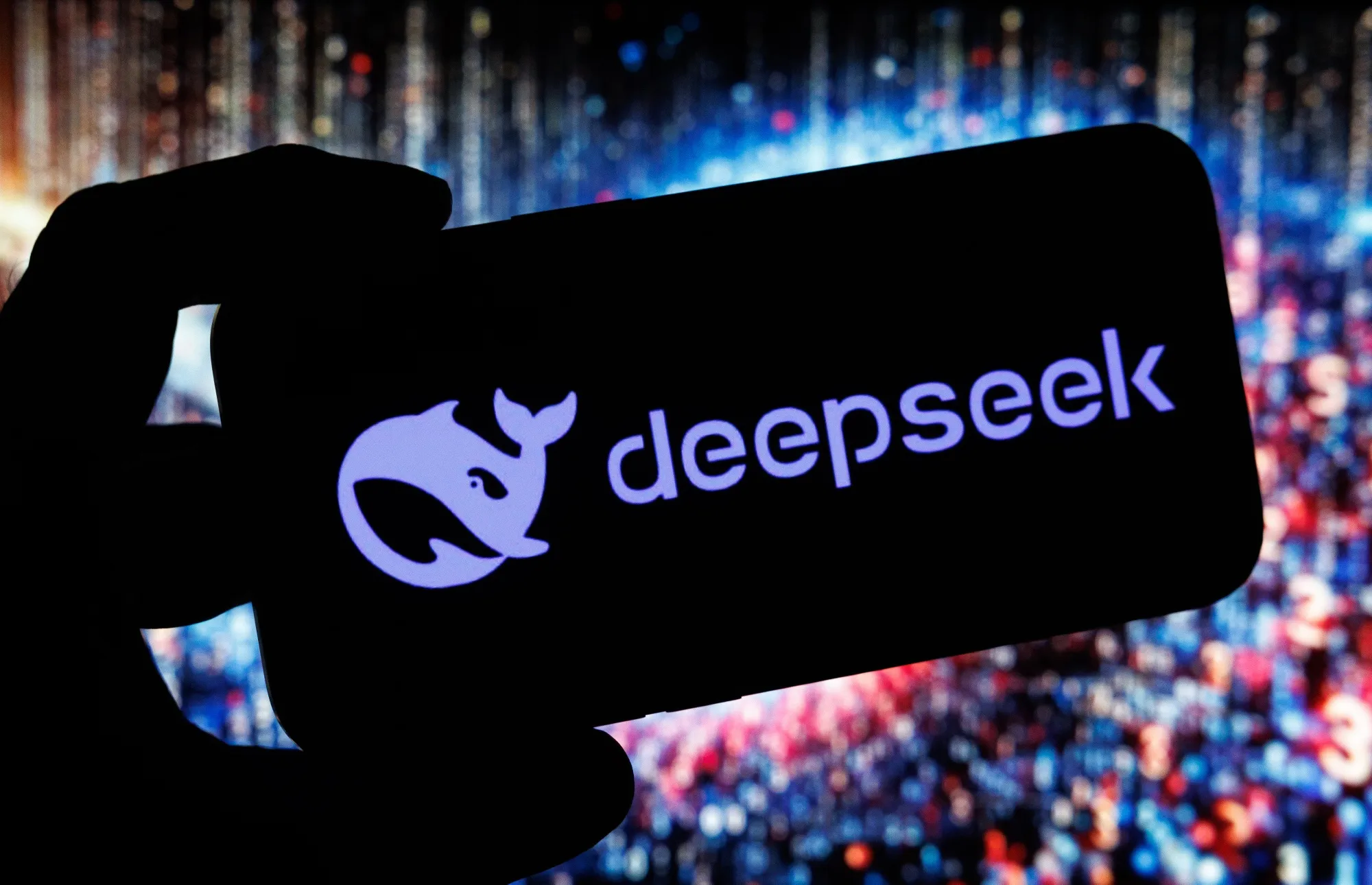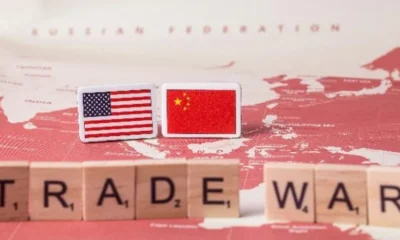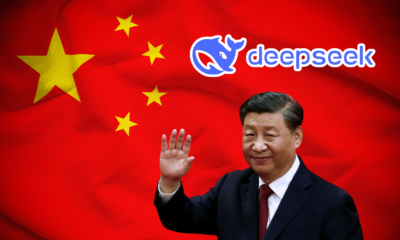Published
9 months agoon

The tech world has been buzzing and this time, the disruptor is China’s DeepSeek.
The startup has sent shockwaves through the industry, claiming it built a cutting-edge AI model in just two months, spending under $6 million—and using Nvidia’s less-advanced H800 chips. The cherry on top? An app powered by DeepSeek’s V3 model shot to the top of iPhone downloads in the U.S. on Monday.
Thus, DeepSeek’s free AI assistant has sparked worldwide interest by offering impressive results at a fraction of the cost of current services. While skepticism remains, the AI world is paying attention.
Even OpenAI’s CEO Sam Altman gave credit where it’s due, calling it an “impressive model.” But he didn’t miss the chance to assert OpenAI’s edge, saying, “We will obviously deliver much better models…but it’s invigorating to have new competition!”
The impact? Absolutely massive.
The ripple effect has been seismic. Japanese tech stocks tumbled, and global markets took a hit as investors questioned the sky-high valuations of AI giants.
Japanese chip-testing firm Advantest dropped 10% on Tuesday after a similar slide on Monday. Chip-making equipment giant Tokyo Electron and SoftBank Group which announced major investment in the US, also took significant hits. The ripple effects spread to the U.S., where Broadcom, Microsoft, and Google parent Alphabet saw declines. The Philadelphia semiconductor index recorded its worst drop since March 2020, down 9.2%.
Nvidia, the poster child of the AI boom, losing a staggering 17% of its market value in a single day—a record $593 billion wipeout. Even datacenter-focused firms like Malaysia’s YTL Power weren’t spared.
So, what’s causing this investor panic?
It’s the realization that the billions of dollars poured into AI by U.S. tech giants might not be yielding the untouchable dominance they were banking on. David Bahnsen, CIO at The Bahnsen Group, summed it up: “These valuations leave no margin for error.”

Its Time To Wake Up!
DeepSeek’s launch has flipped the story that Chinese AI lags far behind its U.S. counterparts.
The app’s cost efficiency and open-source approach have made waves, with industry leaders like Snowflake adding DeepSeek’s models to their marketplace despite geopolitical concerns.
The buzz hasn’t been without skepticism though.
Experts point out that the $6 million claim only covers the final training run, with earlier development likely costing much more—possibly over $1 billion. Yet, the model’s performance has forced a rethink about the scalability of AI and the role of open-source technology in democratizing access.
The Larger Question Of Billion-Dollar Spending
The AI revolution is in full swing, with billions being funneled into advancing technology by U.S. tech giants. Yet, the emergence of DeepSeek, a Chinese startup claiming to have developed a competitive AI model at a fraction of the cost, has sharpened scrutiny on the extravagant spending of Silicon Valley.
Could the U.S. tech titans be overinvesting, or is DeepSeek’s approach just a temporary ripple in a vast ocean of AI innovation?
DeepSeek’s claim of building its R1 AI model for under $6 million has raised eyebrows. Industry analysts like Bernstein’s Stacy Rasgon suggest the costs might be understated, considering that figure likely covers only computing power, excluding R&D and infrastructure expenses. Nonetheless, the number pales in comparison to the estimated $250 billion U.S. companies are expected to pour into AI infrastructure this year.
For now, DeepSeek’s cost-effective approach, coupled with pricing its models at up to 40 times lower than competitors like OpenAI, has sent shockwaves through the industry. However, it also inviting questions – can these models truly compete in trust, safety, and scalability, especially in the enterprise sector where data security and reliability are paramount?

Will U.S. Giants Blink First?
DeepSeek’s rise poses a fundamental question -are the billions spent by U.S. companies truly necessary, or has the race for dominance blinded them to efficiency?
Analysts predict U.S. hyperscalers will stress the need for aggressive AI spending, particularly as they push towards agentic and physical AI applications, like autonomous systems and robotics.
But the emergence of a lower-cost alternative could trigger a price war. OpenAI and others may resist slashing prices immediately, instead leaning into trust and safety features as key differentiators. Meanwhile, startups like DeepSeek, unconstrained by legacy costs, might capture market share in cost-sensitive regions or applications.
The Geopolitical Dimension
DeepSeek’s success also suggests the geopolitical complexities of the AI race especially since its innovation comes against the backdrop of U.S. sanctions aimed at restricting China’s access to advanced chips. While some argue these sanctions spurred creativity, they’ve also imposed significant constraints.
The Hangzhou-based company’s ability to innovate using older, restricted chips underscores China’s determination to overcome technological barriers. Yet, replicating DeepSeek’s success across the Chinese tech ecosystem remains a challenge due to tighter curbs on high-end semiconductors.
Beijing’s response has been to pour billions into domestic chip production, exemplified by Huawei and SMIC’s strides in producing advanced chips like the 7nm processor. However, scaling these breakthroughs to meet global AI demands is a long-term endeavor.
For U.S. tech giants, DeepSeek’s emergence is both a warning and an opportunity. The need for more efficient AI models is clear, and incumbents are likely to adopt or adapt any innovative techniques developed by challengers. Investors will closely watch how companies like Microsoft, Google, and Meta respond in their upcoming earnings calls.
Meanwhile, DeepSeek faces its own hurdles. Its reliance on servers in China could deter adoption in markets wary of data privacy concerns, particularly in the U.S. and Europe. Additionally, while it has made a compelling case for low-cost AI, scaling its operations and maintaining competitive quality will be the ultimate test.
The Bigger Question
DeepSeek’s emergence isn’t just about AI—it’s about global competition. U.S. export controls on Nvidia chips, designed to slow China’s progress, seem to have barely made a dent. As Japan’s digital minister noted, the assumption that Chinese AI was five years behind has been thoroughly debunked.
For American tech giants, this is a costly outing with quarterly earnings reports around the corner, investors will be watching closely to see how these companies justify their billion-dollar bets on AI. Meanwhile, DeepSeek’s open-source approach has sparked a new wave of innovation, showing that cutting-edge technology doesn’t have to come with a sky-high price tag.
The Last Bit


A Trade War That Just Won’t Quit. As Trump’s Tariffs Hit, China Stays The Course, For Xi’s Its Business As Usual Strategy


DeepSeek Ai Rush. China’s AI Contender Gears Up for Next Big Launch Even As It Gets Xi Jinping’s Blessings


Layoffs Are Back. JPMorgan, Chevron, And More—Why Across All Sectors Nearly Half Of Companies Expect Job Cuts In 2025?


Microsoft’s Earnings Beat Estimates, But Stock Slips—Probes If DeepSeek Stole OpenAI Data For Training. But There’s Something That’s Exciting Nadella, What Is It?


The Stock Market’s Cracking—And It’s Not Pretty. FIIs Exodus But Analysts Sight Long Term Potential Despite Rs 32,00,000 Core Investor Wealth Gone In 2025. What Is The Bear-ish Deal Here?


New Front Opening For OpenAI’s ChatGPT, China’s DeepSeek Emerges As A Strong Contender In The AI Race. More Power To US-China Rivalry?
